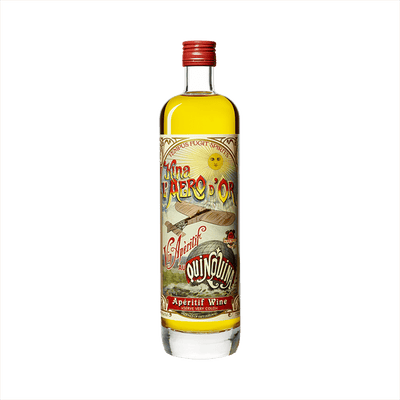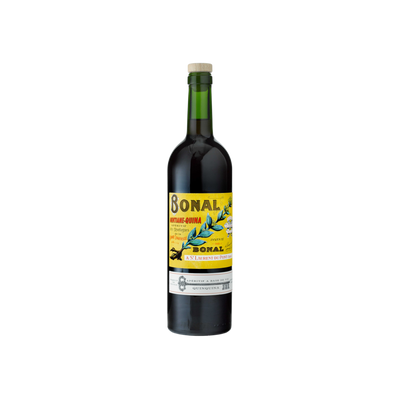Quinquinas
What are Quinquinas?
Quinquinas are a distinctive category of French Aperitifs that get their signature bitter-sweet character from cinchona bark, the same botanical that gives tonic water its quinine bite. These wine-based spirits are fortified and infused with this medicinal bark along with various herbs and spices, creating complex, slightly bitter drinks that were originally marketed as health tonics in the 19th century. What defines quinquinas is this specific use of cinchona bark as the primary flavoring agent, distinguishing them from other French aperitifs like vermouth or pastis.
Learn More About Quinquinas
What makes Quinquinas unique?
Quinquinas stand apart from other aperitifs through their distinctive use of cinchona bark, which gives them a characteristic bitter quinine flavor that's both medicinal and refreshing. While most aperitifs rely on various botanicals for complexity, quinquinas specifically showcase this antimalarial bark that French colonists originally used for health purposes, creating a category that bridges the gap between medicine and pleasure. This quinine backbone provides a unique dry, almost chalky bitterness that's more pronounced than the gentian root found in many Italian aperitifs, making quinquinas instantly recognizable on the palate.
How are Quinquinas made?
Quinquinas start with a base wine—typically white, though some producers use red—that gets infused with cinchona bark, the key ingredient that provides the characteristic bitter quinine flavor. The wine is macerated with cinchona along with various botanicals like gentian root, orange peel, herbs, and spices, either through direct steeping or by adding pre-made botanical extracts. After the infusion period, the mixture is filtered, sweetened with sugar or mistelle (grape juice with added alcohol), and then aged before bottling to allow all the flavors to marry together.
How do you drink Quinquinas?
Quinquinas shine brightest when served chilled over ice with a twist of lemon or orange, making them perfect aperitifs that awaken your appetite before dinner. These French fortified wines also work beautifully in classic cocktails like the Vesper or mixed with gin and vermouth in variations of the martini family. Their bitter-sweet complexity and herbal backbone make them ideal for cooler months and sophisticated evening gatherings, though a chilled glass on a warm afternoon captures that quintessentially European café culture perfectly.
How do I choose good Quinquinas?
Start by considering your cocktail's other ingredients - lighter, more citrus-forward quinquinas like Cocchi Americano work beautifully in gin-based drinks, while richer, more bitter options like Dubonnet pair well with whiskey or rum. If you're sipping neat or on the rocks, go for something with complexity that matches your palate preferences - sweeter styles for those who enjoy port or sherry, or drier expressions if you lean toward vermouths. Don't overlook regional styles either, as French quinquinas tend to be more wine-forward while Italian versions often bring more herbal intensity to your glass.
Nutritional Information
Typical Calorie Range per Ounce: 35-45 calories
Typical Carbohydrate Range per Ounce: 4-7 grams
Typical Sugar Range per Ounce: 3-6 grams
Typically Gluten Free: Yes
Quinquinas like Lillet Blanc and Cocchi Americano are wine-based aperitifs that fall into a moderate calorie category compared to other fortified wines. The sugar content comes from both residual grape sugars and any added sweetening during production. Most quinquinas are naturally gluten-free since they're made from wine and botanicals, but we always recommend checking the specific product label or contacting the manufacturer directly to confirm gluten-free status, especially if you have celiac disease or severe gluten sensitivity.
Scrolled this far? Your reward? Quinquinas Trivia!
- The original Dubonnet recipe was created in 1846 specifically to help French Foreign Legion soldiers in North Africa take their mandatory daily malaria medicine. The French government held a contest to make quinine palatable, and Joseph Dubonnet's wine-based formula won by masking the bitter bark extract with herbs and spices. His slogan? "Dubonnet first, fever never!"
- James Bond's drink order in the novels isn't actually a vodka martini – it's a Vesper made with Kina Lillet, a quinquina that was reformulated in 1986. The original bitter, quinine-heavy Kina Lillet that Fleming wrote about no longer exists, which means nobody can make Bond's cocktail exactly as Ian Fleming intended it to taste.
- Quinquina production requires cinchona bark from trees that grow only at specific altitudes in the Andes Mountains – between 5,000 and 9,000 feet. These trees take 6-8 years to mature before their bark can be harvested, and each tree yields only about 15 pounds of usable bark. This makes authentic quinquina one of the most geographically restricted spirit categories in the world.
- During Prohibition, American bartenders couldn't get French quinquinas, so they created their own substitutes using whatever they could find. Some speakeasy recipes combined sweet vermouth with Angostura bitters and orange peel, while others used patent medicines containing quinine. These improvised "American quinquinas" were often stronger and more bitter than their European counterparts.
- The Negroni Sbagliato – that Instagram-famous "wrong" Negroni – was actually invented by accident in 1972 when Milan bartender Mirko Stocchetto grabbed a bottle of Prosecco instead of gin while making a Negroni. But here's the twist: the drink works so well because Campari itself contains quinine and shares DNA with quinquina-style aperitifs, creating unexpected harmony between the bitter and bubbly elements.
Higher-proof spirits can be intense. Mix carefully, taste thoughtfully, and enjoy responsibly.
Gift message (optional)


